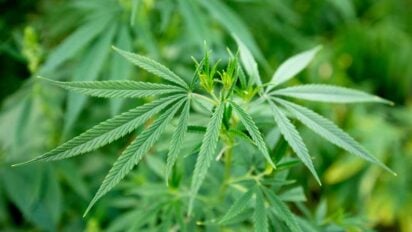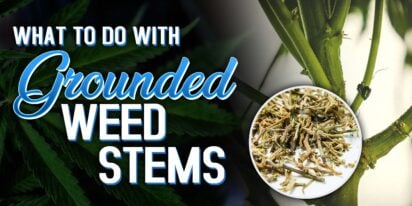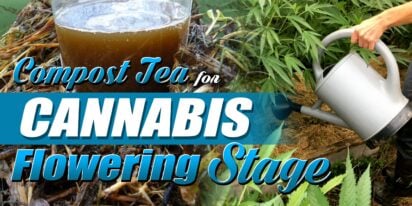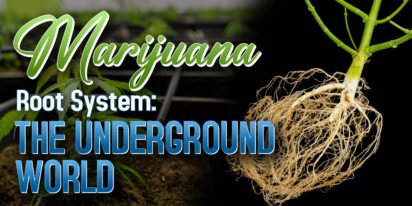
Are You 18 Or Over?
YesOr
No By clicking yes, you certify that you are over 18. By using this website, you agree to our legal disclaimer.605+ Cannabis Strains over 20 Breeders worldwide.
Table of Contents

Usually, marijuana plants come in both male and female sexes that can easily be distinguished from one another. Different genders play different roles and create different results, depending on what a cannabis cultivator is after. Male plants are used to produce pollen to fertilize female plants and spur reproduction. Female plants, when pollinated, produce more seeds to increase their specie. When these female plants are never pollinated, however, they use their resources to grow buds, produce more THC, and become more psychoactive than male plants and fertilized female plants.
However, sometimes, certain plants grow to exhibit both male and female structures on the same plants. These plants are called hermaphrodite plants.
Hermaphroditism is not exclusive to cannabis plants. In fact, this phenomenon is usual in nature as certain species go on survival mode and enables the process of self-fertilization. Many animals, such as earthworms, slugs, and snails, are hermaphrodites. And while this may sound interesting or cool, hermaphroditism in cannabis plants is actually a problem that many cultivators want to avoid.
Since the cannabis plant is capable of pollinating itself, female flowers will now focus their energy on producing seeded buds instead of actual flower buds that contain the psychoactive effects. Seeded buds are only useful in creating feminized seeds. Otherwise, they are completely useless and even impossible to sell. The flower buds, on the other hand, are what can be harvested and smoked.
A single hermaphrodite plant can be very frustrating for cannabis growers as they can easily pollinate all the female flowers, flushing down months of hard work, patience, and effort down the drain. Additionally, if these hermaphrodite plants are left to grow and continue to release pollens, this undesirable trait will be passed down from one generation to the next.
There are some common reasons to blame for marijuana plants becoming hermaphrodites.
The first one is genetics. Some cannabis strains, such as the Thai Sativas or Gorilla Glue #4, tend to grow as hermaphrodite plants as a result of their natural genetic inheritance. Most likely than not, they come from a line of strains who were subjected to breeding errors that introduced hermaphroditism tendencies.
Certain environmental influences, which materializes as stress for the plants, can result in them developing hermaphroditism. Essentially, cannabis plants crave a stable set of practices or environmental conditions. As soon as a plant feels that the conditions for its bloom phase are unfavorable, it goes on survival mode and pollinates its own female flowers by growing male pollen clusters.
Environmental stress comes in many forms. This includes temperatures being too high or too low. Or if their light cycles are very unreliable with disruptions during their night period. Too much or too little water can also stress the plant, causing them to go hermaphrodite. Diseases or pest infestations are also forms of stress. If the plants are overfed or underfed or if the nutrients mix is at the wrong PH or if the plants are suffering from root rot and broken branches – all these factors can provoke hermaphroditism.
Trimming the cannabis plants near or in their flowering phase will also trigger a hermaphrodite marijuana situation. Anything less than perfect conditions can create stress, and stress can increase the tendency for the plant to go hermaphrodite, especially if they have the genetic dominance to become one.
Cannabis plants that have been left on the flowering phase for too long will begin producing hermaphroditic clones. Since the plants will have waited a long time to be pollinated and have not gotten any pollen, they can decide to make male flower clusters themselves to create their own pollen to allow the continuation of their specie.
Feminized seeds tend to become hermaphrodites. This propensity increases when the process of creating these seeds do not follow the natural pathway to grow out as a male or female plant. Nowadays, many cannabis growers have successfully developed several strains that can come up with a 99% chance of creating female-only plants.
Watching out for hermaphrodite plants is very time-consuming. The flowers can hide under leaf junctions, especially in large cannabis plants, which makes scoping out floral clusters an impossible and impractical task. Besides, these flowers can develop within a matter of hours.
However, if you want to save your crop production and ensure that you will be able to reap yields of good smoke, the process of avoiding hermaphrodite plants is very important.
The general idea is to use the best marijuana genetics you can find when you are considering growing your own cannabis plants. Research on the strain’s sensitivity to hermaphroditism. It would be safer to avoid these strains as special and strict precautions must be taken to avoid producing plants with pollen sacs.
To prevent hermaphroditism from affecting your cannabis production, ensure that it avoids stress as much as possible – especially during and around their bloom period. Pay close attention to the different parameters that can affect their development, including but not limited to the following: ambient temperature, lighting, irrigation, structural health, hygiene, and pruning schedule.
Regularly inspect your cannabis plants for any signs of diseases or pests. Keep the area clean and make sure timers are well-monitored. Water them correctly and with the right frequency. Feed them the recommended nutrient mixture and avoid changes in the mixes. Lastly, keep an eye on the trichomes to ensure you do not miss the harvest period and risk hermaphroditism.
Make sure to follow the growing instructions of your specific cannabis plant and avoid trying other practices that have not been tested. Otherwise, you create the risk of eliminating your entire crop of healthy cannabis plants due to the emergence of a single hermaphrodite plant.
Check online reviews, ask around, and carefully review the feminized or regular seeds you are purchasing. Stick to dealers who are trusted and are known to produce top-quality feminized seeds.
Hermaphroditism in cannabis plants is as troublesome and frustrating as it sounds. Understanding the differences between male and female cannabis plants and knowing how to identify hermaphrodite plants is only one step in preventing this detrimental trait. It is crucial that you read on the strains you want to cultivate and provide a stable, stress-free growing environment to grow healthy and fruitful cannabis yields.

[ez-toc] In indoor gardening, maintaining an optimal temperature within your grow tent is crucial for the health and productivity of your plant

[ez-toc] Welcome to the delightful world of cannafudge crafting, where sweetness meets sophistication, and cannabis infusion adds a unique twis

[ez-toc] You’ve finished trimming your weed, but what about those leftover stems? Don’t throw them away! These seemingly useless bits can a

Feeling high can be an exhilarating experience, but it's essential to make the most of it by engaging in activities that enhance the sensation a

[ez-toc] Starting with planting cannabis seeds might seem simple, but how deep should cannabis seeds be planted for them to grow well. In this

[ez-toc] In the realm of cultivating cannabis, maximizing growth during the flowering stage is a top priority for growers. While various method

[ez-toc] Nutrient burn is a common issue among plant enthusiasts, often resulting from over-fertilization or improper nutrient application. It

[ez-toc] Welcome to our complete guide to dealing with harmful pathogenic mold in cannabis. For those who grow cannabis, preventing mold is vit

In recent years, there has been speculation about “did Shakespeare smoke weed?” This idea originates from a study by South African anthropol

[ez-toc] Welcome to the hidden world beneath the soil – the inside of the marijuana root system. While the vibrant leaves and resinous flower

Are You 18 Or Over?
YesOr
No By clicking yes, you certify that you are over 18. By using this website, you agree to our legal disclaimer.